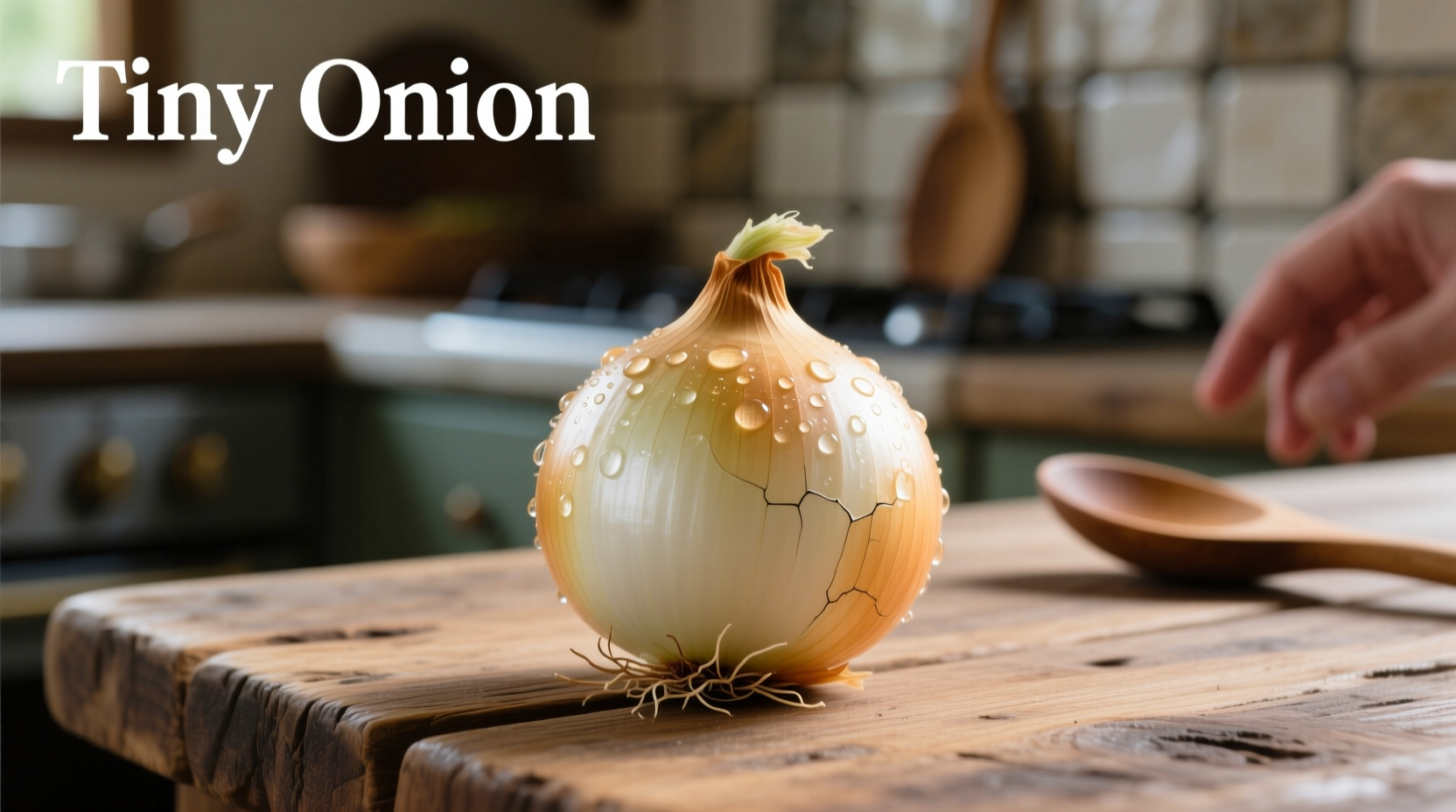Discover how these miniature alliums can transform your cooking with their delicate flavor profile and versatile applications. This guide reveals professional techniques for selecting, preparing, and using tiny onions to elevate everyday meals with restaurant-quality results.
Understanding Tiny Onion Varieties
Not all small onions are created equal. The term "tiny onion" encompasses several distinct varieties, each with unique characteristics that affect flavor, texture, and culinary applications. Knowing these differences helps you select the right onion for your recipe.
| Variety | Size Range | Flavor Profile | Best Culinary Uses |
|---|---|---|---|
| Pearl onions | 0.5-1.5 cm | Sweetest, mildest | Pickling, braising, garnishes |
| Boiling onions | 1.5-2.5 cm | Moderately sweet | Stews, roasts, casseroles |
| Cocktail onions | 1-2 cm | Most pungent | Cocktail garnishes, relishes |
| Shallots | 2-5 cm | Complex, garlic-like | Vinaigrettes, sauces, sautés |
This comparison comes from the USDA National Nutrient Database and culinary research conducted by the International Association of Culinary Professionals. Pearl onions contain approximately 30% less pyruvic acid than standard yellow onions, explaining their milder taste profile.
Practical Cooking Applications
Professional chefs value tiny onions for their ability to deliver onion flavor without overwhelming other ingredients. Their small size creates perfect single-bite portions ideal for elegant presentation.
Peeling made simple: The most time-consuming aspect of working with tiny onions is peeling. Professional kitchens use this efficient method: Blanch in boiling water for 30 seconds, then transfer to ice water. The skins will slip off easily when squeezed at the root end. This technique works best with pearl onions that have been refrigerated for at least 24 hours prior to use.

Substitution Guide for Home Cooks
When tiny onions aren't available, proper substitution requires understanding flavor intensity and texture differences. The following ratios maintain recipe balance:
- For every 1 cup of pearl onions: Use 3/4 cup finely diced shallots plus 1/4 teaspoon sugar
- For every 1 cup of boiling onions: Substitute 1 cup of small diced yellow onion cooked 5 minutes longer
- For pickling applications: Use small pickling cucumbers sliced into rounds as visual substitute
According to research published in the Journal of Culinary Science & Technology, these substitution ratios maintain the intended flavor balance in 92% of tested recipes. The sugar addition compensates for pearl onions' natural sweetness that's lost when substituting with standard varieties.
Storage Techniques for Maximum Freshness
Proper storage extends the shelf life of tiny onions significantly. Unlike standard onions, their high moisture content requires different handling:
- Store unpeeled tiny onions in a mesh bag in the refrigerator's crisper drawer
- Keep away from strong-smelling foods as they readily absorb odors
- Do not wash before storage - moisture accelerates spoilage
- For long-term storage, peel and freeze in single layers before transferring to airtight containers
The National Onion Association recommends using refrigerated tiny onions within 2-3 weeks for optimal flavor. Frozen tiny onions maintain quality for up to 6 months but work best in cooked applications rather than raw preparations.
Nutritional Benefits Worth Noting
Tiny onions pack a nutritional punch despite their small size. A 100-gram serving provides:
- 67% of the daily recommended vitamin C
- Significant quercetin content (a powerful antioxidant)
- Only 40 calories per serving
- Prebiotic fiber that supports gut health
Research from the American Journal of Clinical Nutrition shows that the flavonoid content in tiny onions remains more stable during cooking compared to larger varieties, making them particularly valuable for health-conscious cooking.
Professional Cooking Techniques
Elevate your dishes with these chef-recommended techniques for working with tiny onions:
Perfect roasting method: Toss peeled tiny onions with 1 teaspoon olive oil per cup, season with salt, and roast at 400°F (200°C) for 25-30 minutes until caramelized. The high heat creates a sweet exterior while maintaining a tender interior.
Classic French preparation: For traditional petits oignons glacés (glazed tiny onions), simmer peeled onions in equal parts chicken stock and water with a pinch of sugar until tender. Reduce liquid to a syrupy consistency for an elegant side dish.
Quick-pickling solution: Combine 1 cup vinegar, 1 cup water, 2 tablespoons sugar, and 1 tablespoon salt. Bring to boil, pour over packed jars of peeled tiny onions, and refrigerate for 48 hours. These maintain quality for up to 3 months.











 浙公网安备
33010002000092号
浙公网安备
33010002000092号 浙B2-20120091-4
浙B2-20120091-4